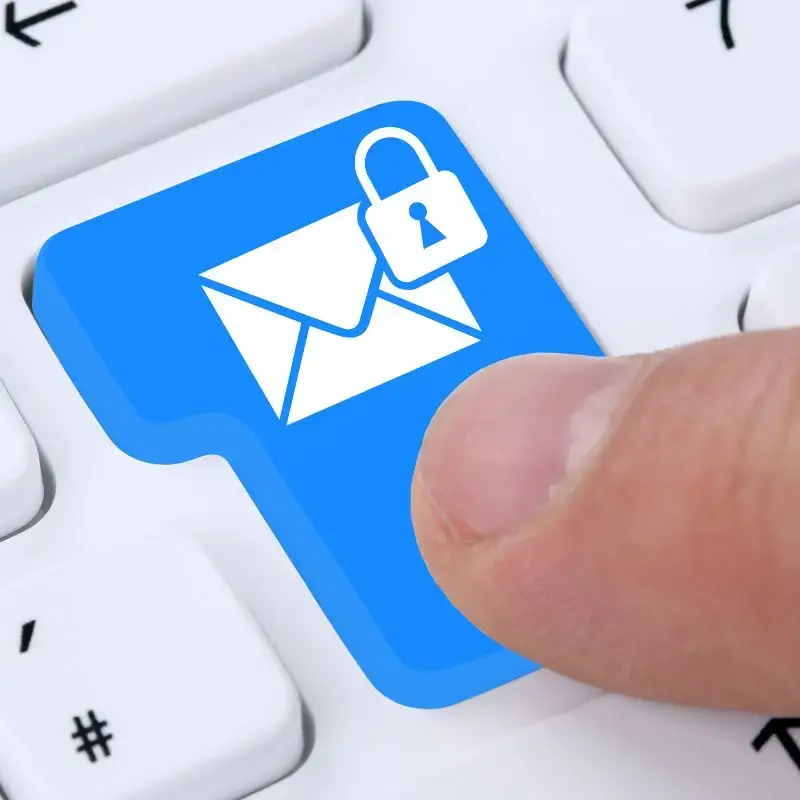Webmail & DKIM Configuration
Our webmail DKIM configuration service provides a seamless solution for your businesses to enhance your email security and reputation. DKIM (DomainKeys Identified Mail) is an email authentication method that allows the recipient’s mail server to verify the integrity and authenticity of the email. Our platform guides you through the process step-by-step, ensuring proper key generation and DNS record setup.
Secure Your Email with Our Webmail DKIM Configuration

Are you tired of worrying about email security and the authenticity of your messages? Our webmail DKIM configuration service is here to alleviate your concerns and provide a reliable solution. DKIM (DomainKeys Identified Mail) is a powerful email authentication protocol that adds a digital signature to your outgoing messages, ensuring their integrity and origin. Our service simplifies the process of setting up DKIM for your webmail, taking you through the necessary steps with ease. We generate the necessary cryptographic keys and guide you in correctly configuring the DNS records for your domain. By implementing DKIM, you can protect your email reputation, minimize the risk of phishing attacks, and increase the chances of your messages reaching the inbox rather than being flagged as spam. Take advantage of our webmail DKIM configuration service and enjoy peace of mind knowing that your email communication is secure and trustworthy
TBP Digital can assist in Webmail and DKIM configuration by setting up and optimizing email servers and domain keys to enhance email deliverability, security, and authentication. We ensure your email communications are reliable and compliant with industry standards, so you don’t get marked as spam or phished.
Why Webmail & DKIM Configuration Service is Crucial for Email Security
Webmail and DKIM configuration services play a crucial role in ensuring robust email security. In today’s digital landscape, where phishing attacks and email spoofing are prevalent, it is essential to protect sensitive information and maintain the trust of both senders and recipients. By implementing our Webmail & DKIM Configuration Service, you establish a strong defense against malicious activities. DKIM (DomainKeys Identified Mail) adds a digital signature to your outgoing emails, enabling recipients to verify their authenticity.

What We Do
Initial Assessment
We Begin by understanding the client’s requirements and their webmail platform. Gather information such as their domain name, webmail provider, and any existing email security measures they have in place. We Assess your current DKIM status, if any, and determine the scope of the configuration service required.
DNS Record Configuration
We Guide the client through the process of configuring the necessary DNS records for a domain. This typically involves adding a TXT record with the DKIM public key to their DNS settings. We Provide step-by-step instructions tailored to their specific DNS provider, emphasizing the importance of accuracy and consistency.
Testing and Verification
We validate the DKIM configuration by sending test emails and verifying the DKIM signatures. We assist you in checking the email headers and ensuring that the DKIM signatures are correctly applied and verifiable by recipient mail servers. We handle and address any issues that may arise during the testing phase and provide troubleshooting support for you.
Are You Looking For A Reliable Digital Partner?
If you’re seeking a dependable digital partner, TBP Digital can assist you. We help you improve online visibility, boost conversion rates, and maximize your return on investment with our results-driven digital marketing solutions. For all your digital marketing needs, we’re a reliable ally. We’re passionate about providing the best solutions for our clients. Our team of professionals drive success for your business. Contact us today to find out more.
Frequently Asked Questions
It lets you access your email accounts through a web browser, so you don’t need Outlook or Thunderbird. In today’s digital workplace, it makes it easier to collaborate and communicate because it offers flexibility, accessibility, and centralized email management.
Webmail can enhance the security of email communications by providing built-in encryption, spam filters, and antivirus scanning, which help protect against malicious emails and attachments. Additionally, Webmail services often have strong authentication mechanisms, like two-factor authentication (2FA), to protect email accounts from unauthorized access.
Using DKIM (DomainKeys Identified Mail) configuration for email authentication offers several benefits, including increased email deliverability and reduced chances of emails being marked as spam, as it verifies the authenticity of the sender’s domain. DKIM also enhances email security by preventing email spoofing and phishing attacks, ensuring that recipients can trust the source of the email and that the content remains unaltered during transmission.
DKIM (DomainKeys Identified Mail) helps prevent email spoofing and phishing attacks by digitally signing outgoing emails with a unique private key, which can be verified by the recipient’s email server using the corresponding public key stored in the sender’s DNS records. This authentication process ensures that the email’s origin is legitimate and has not been tampered with, making it more challenging for malicious actors to impersonate trusted senders or manipulate the email’s content, thus reducing the risk of phishing and email spoofing.
When configuring DKIM for webmail, follow best practices by generating strong, unique keys for each domain and regularly rotating them to maintain security. Additionally, periodically monitor the DKIM configuration for any errors or issues, and keep your DNS records up-to-date to prevent email authentication failures and ensure the continued reliability and security of your email communication.
It’s difficult for businesses to set up webmail and DKIM configuration because it’s complicated and requires technical skills, and there’s the possibility of misconfigurations that lead to email delivery problems. Additionally, to maintain the security and effectiveness of their email communication, businesses need to stay vigilant about DNS records and key rotations.
Yes, using webmail and DKIM configuration for multiple domains or email addresses is possible. Webmail providers and email servers let you set up DKIM for various parts to authenticate emails sent from different fields and email addresses. To maintain security and authentication of emails, it’s important to maintain unique private and public key pairs for each domain and update DNS records accordingly.

